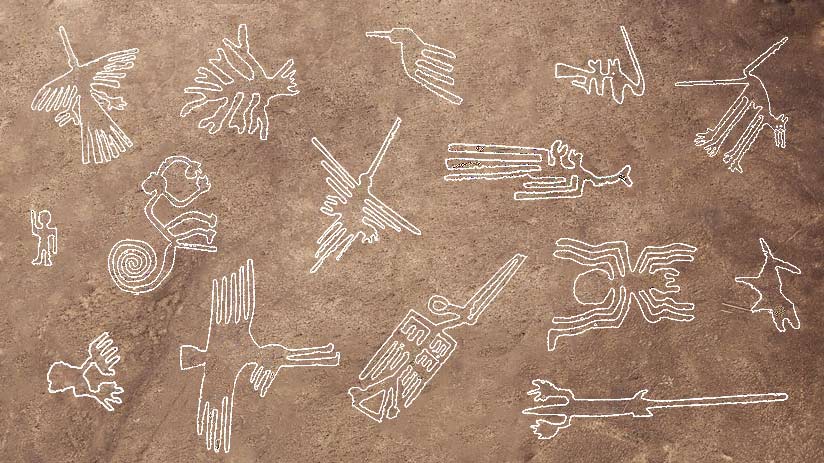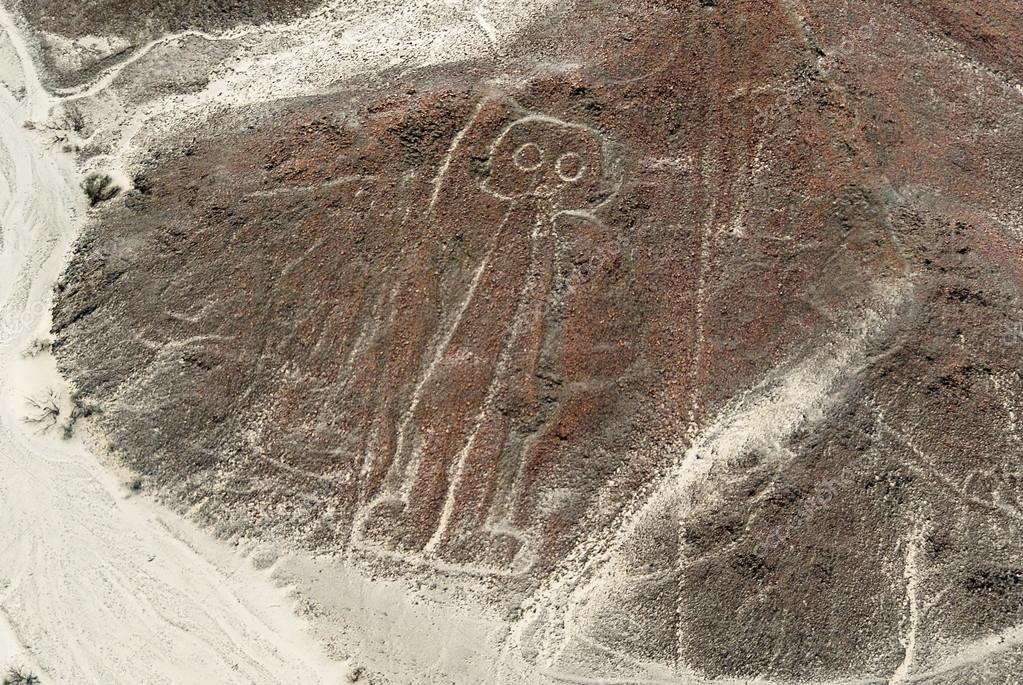
As a plane soars through the air above the arid desert of southern Peru, patches of desert that were once seemingly indistinguishable from one another begin to organize and take new shapes. The drab colors of rust-red and tan transform into distinct white lines that crisscross the dry terrain, which receives less than an inch of rain each year. Geometric patterns, such as trapezoids, straight lines, rectangles, triangles, and swirls, become visible. Further inspection reveals that some of these shapes form figures of animals and plants, such as hummingbirds, spiders, and monkeys – all of which are collectively known as the Nasca lines. The Nasca lines have been a source of mystery for over 80 years. Questions such as how they were formed and why they exist still need to be answered. The lines in Peru, around 200 miles southeast of Lima, are made up of over 800 straight lines, 300 geometric figures, and 70 animal and plant designs. The most extended lines can stretch up to 30 miles, while the biomorphs, or animal and plant designs, can be as large as the Empire State Building.
THE LINES REVEALED
In 1926, Toribio Mejia Xesspe, a Peruvian archaeologist, began the first systematic study of the mysterious lines in the desert. However, when commercial planes flew over Peru in the 1930s, the lines were brought to public attention. On June 22, 1941—one day after the winter solstice—American professor Paul Kosok found himself at the foot of a line and, after a full day of studying them, he looked up to see the sun setting in direct alignment with the line. This inspired Kosok to christen the 310 square mile stretch of high desert as “the largest astronomy book in the world.” Maria Reiche, a German, followed in Kosok’s footsteps; for 40 years, she dedicated her life to studying the lines and fought to protect the site. In 1974, she was granted a National Geographic grant for her work and spent much of her time living in a small house near the desert to ward off any visitors who might damage the lines.
WHAT ARE THE LINES?

The remarkable geoglyphs of the Nasca people have been preserved in the Peruvian desert for 500 to 2000 years. Formed by removing rocks and earth to create a “negative” image, the designs have withstood the elements due to the little rain and wind in the area. The stones that cover the desert have aged to a deep rust color, and when the top 12-15 inches of rock is removed, light-colored, high-contrasting sand is revealed. In some places, the pampa is marked by overlapping lines and designs cut through with ancient and more modern straight lines. These incredible geoglyphs are an enduring testament to the creativity of the Nasca people.
THE THEORIES

Until the 1970s, the theories of Kosok and Reiche on archeo-astronomy concerning the Nasca Lines of Peru were generally accepted as accurate. However, a new wave of research began when an American team arrived to study glyphs. This research began to raise questions about the astronomical view of the lines and the more far-fetched theories of the 1960s that associated the lines with aliens and ancient astronauts. National Geographic Explorer-in-Residence, Johan Reinhard, brought a more comprehensive approach to the analysis of the lines. He argued that the lines were not necessarily pointing at anything on the horizon but led to places where rituals were performed to obtain water and fertility for crops. This was particularly important in the arid region, which receives only about 20 minutes of rain annually. Reinhard’s conclusions were published in his book, The Nasca Lines: A New Perspective on their Origin and Meanings.
The Nasca lines—ancient geoglyphs found in the Peruvian desert—have long been a source of mystery and speculation. Anthony Aveni, a former National Geographic grantee, believes that the trapezoids and straight lines found in the Nasca plain were likely used in connection with rituals rather than to locate water. Aveni explains that the trapezoids were “big wide spaces where people can come in and out” and that the rituals likely had something to do with “the ancient need to propitiate or pay a debt to the gods.” Reinhard’s discovery of spiral designs and animal symbolism elsewhere in the Andes adds to the complexity of the glyphs. Spiders, for example, are believed to represent rain, hummingbirds are linked to fertility, and monkeys are found in the Amazon—an area with abundant water. Thanks to the combination of archeology, ethnohistory, anthropology, and new technological research, our understanding of the Nasca lines will continue to evolve.
Leave a Reply